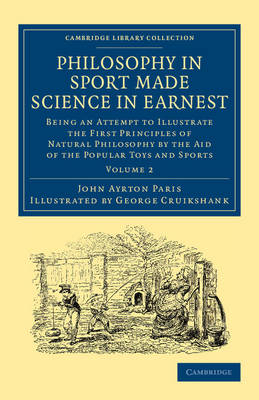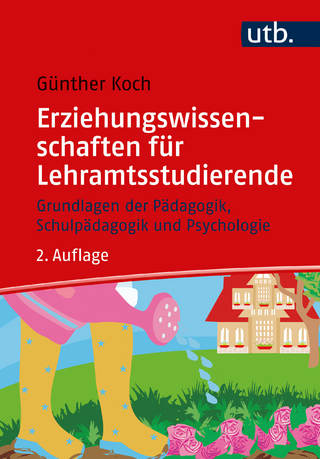
Philosophy in Sport Made Science in Earnest
Being an Attempt to Illustrate the First Principles of Natural Philosophy by the Aid of the Popular Toys and Sports
Seiten
2013
Cambridge University Press (Verlag)
978-1-108-05740-0 (ISBN)
Cambridge University Press (Verlag)
978-1-108-05740-0 (ISBN)
John Ayrton Paris (1785–1856), writer and physician, served as president of the Royal College of Physicians from 1844 until his death. Originally published in 1827, this three-volume work is a book of science for children, intended, in the author's words, 'to blend amusement with instruction'.
John Ayrton Paris (1785–1856), writer and physician, became a member of the Linnean Society in 1810, and served as president of the Royal College of Physicians from 1844 until his death. Intended for children and originally composed for the author's family, this three-volume work about science was first published in 1827. Dedicated to the writer Maria Edgeworth (1768–1849) and with illustrations by George Cruikshank (1792–1878), it aims 'to blend amusement with instruction', since youth, as Paris writes, 'is naturally addicted to amusement'. Topics covered in Volume 2 include the collision of bodies, vacuums, motion in flight, and echoes; the science behind these is demonstrated using marbles, a kite and musical instruments, among various other toys and games. A fascinating and popular text in the history of science education, the engaging narrative seeks to prove 'how profitably, and agreeably, the machinery of fiction may be worked for the dissemination of truth'.
John Ayrton Paris (1785–1856), writer and physician, became a member of the Linnean Society in 1810, and served as president of the Royal College of Physicians from 1844 until his death. Intended for children and originally composed for the author's family, this three-volume work about science was first published in 1827. Dedicated to the writer Maria Edgeworth (1768–1849) and with illustrations by George Cruikshank (1792–1878), it aims 'to blend amusement with instruction', since youth, as Paris writes, 'is naturally addicted to amusement'. Topics covered in Volume 2 include the collision of bodies, vacuums, motion in flight, and echoes; the science behind these is demonstrated using marbles, a kite and musical instruments, among various other toys and games. A fascinating and popular text in the history of science education, the engaging narrative seeks to prove 'how profitably, and agreeably, the machinery of fiction may be worked for the dissemination of truth'.
1. Marbles; 2. The sucker; 3. The soap-bubble; 4. The kite; 5. A short discourse; 6. The arrival of Isabella Villers; 7. Musical instruments; 8. The vicar pays his diurnal visit; 9. A short but interesting chapter.
| Erscheint lt. Verlag | 18.4.2013 |
|---|---|
| Reihe/Serie | Philosophy in Sport Made Science in Earnest 3 Volume Set ; Volume 2 |
| Illustrationen | George Cruikshank |
| Zusatzinfo | 22 Line drawings, unspecified |
| Verlagsort | Cambridge |
| Sprache | englisch |
| Maße | 140 x 216 mm |
| Gewicht | 420 g |
| Themenwelt | Sozialwissenschaften ► Pädagogik ► Allgemeines / Lexika |
| Sozialwissenschaften ► Pädagogik ► Bildungstheorie | |
| Weitere Fachgebiete ► Sportwissenschaft | |
| ISBN-10 | 1-108-05740-3 / 1108057403 |
| ISBN-13 | 978-1-108-05740-0 / 9781108057400 |
| Zustand | Neuware |
| Haben Sie eine Frage zum Produkt? |
Mehr entdecken
aus dem Bereich
aus dem Bereich
Eine neues Menschsein für die Welt von morgen
Buch | Softcover (2023)
Vahlen (Verlag)
CHF 34,85
Einführung in die Theorie transformatorischer Bildungsprozesse
Buch | Softcover (2023)
Kohlhammer (Verlag)
CHF 47,60


